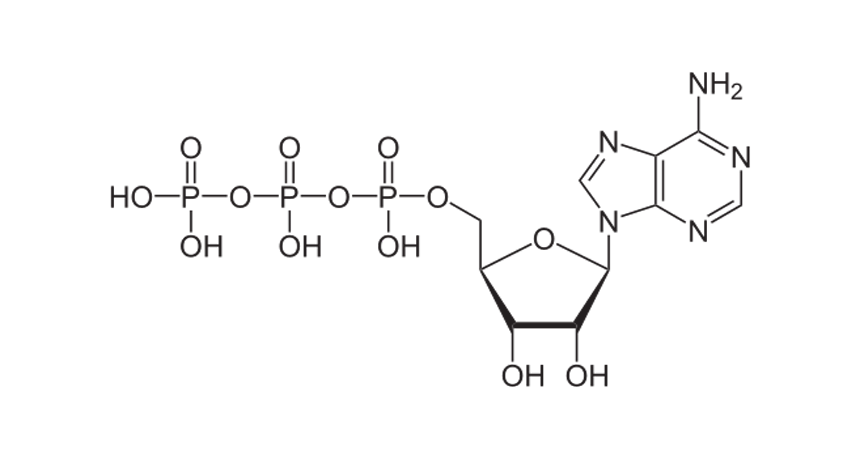adenosine A molecule in the body made from a sugar bound to a nitrogen-based material. It helps the body transport energy in molecules such as ATP. It also promotes sleep in people.
atom The basic unit of a chemical element. Atoms are made up of a dense nucleus that contains positively charged protons and neutrally charged neutrons. The nucleus is orbited by a cloud of negatively charged electrons.
ATP See adenosine triphosphate.
bond (in chemistry) A semi-permanent attachment between atoms — or groups of atoms — in a molecule. It’s formed by an attractive force between the participating atoms. Once bonded, the atoms will work as a unit. To separate the component atoms, energy must be supplied to the molecule as heat or some other type of radiation.
cell The smallest structural and functional unit of an organism. Typically too small to see with the naked eye, it consists of watery fluid surrounded by a membrane or wall. Animals are made of anywhere from thousands to trillions of cells, depending on their size. Some organisms, such as yeasts, molds, bacteria and some algae, are composed of only one cell.
chemical A substance formed from two or more atoms that unite (become bonded together) in a fixed proportion and structure. For example, water is a chemical made of two hydrogen atoms bonded to one oxygen atom. Its chemical symbol is H2O. Chemical can also be an adjective that describes properties of materials that are the result of various reactions between different compounds.
component An item that is part of something else, such as pieces that go on an electronic circuit board.
creatine A nitrogen-based compound made naturally by animals with backbones. It helps their bodies supply energy to cells, especially the making up muscle.
DNA (short for deoxyribonucleic acid) A long, double-stranded and spiral-shaped molecule inside most living cells that carries genetic instructions. It is built on a backbone of phosphorus, oxygen, and carbon atoms. In all living things, from plants and animals to microbes, these instructions tell cells which molecules to make.
kidney Each in a pair of organs in mammals that filters blood and produces urine.
liver An organ of the body of animals with backbones that performs a number of important functions. It can store fat and sugar as energy, breakdown harmful substances for excretion by the body, and secrete bile, a greenish fluid released into the gut, where it helps digest fats and neutralize acids.
mitochondria (sing. mitochondrion ) A structure in all cells (except bacteria and archaea) found outside of their nuclei. Here the cell breaks down nutrients and converts them into a form of energy known as ATP.
molecule An electrically neutral group of atoms that represents the smallest possible amount of a chemical compound. Molecules can be made of single types of atoms or of different types. For example, the oxygen in the air is made of two oxygen atoms (O2), but water is made of two hydrogen atoms and one oxygen atom (H2O).
oxygen A gas that makes up about 21 percent of the atmosphere. All animals and many microorganisms need oxygen to fuel their metabolism.
phosphate A chemical containing one atom of phosphorus and four atoms of oxygen. It is a component of bones, hard white tooth enamel, and some minerals such as apatite.
supplement (verb) To add to something. (in nutrition) Something taken in pill or liquid form — often a vitamin or mineral — to improve the diet. For instance, it may provide more of some nutrient that is believed to benefit health.








